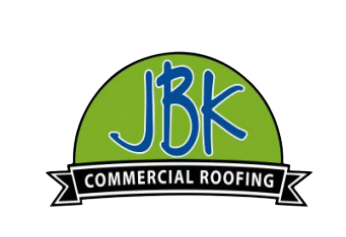Metal Roofing & Heavy Rain Protection
Water seems like an innocent enough element, but it can contribute a lot of damage to building materials. Metal roofs are a preferred choice for commercial buildings because they last for many years and withstand a lot of external elements. They are recyclable and energy-efficient. But, even something as robust as metal can succumb to the weight of water. Prepare your roof correctly with these tips.
Please note that metal roofing has limitations when considering roof slopes, roof penetrations, and roof design. Remember metal roofing is resilient as a material, but a metal roofing system is a watershed system, not a waterproof system – especially when roof slope is considered. Just as a waterproof membrane system has its place in flat or shallow slope installations; metal roofing can be an excellent choice for the roof with a significant slope. In addition, metal roofing has desirable aesthetic value and can provide your facility with curb appeal!
METAL ROOFS AND RAIN
The interest in metal roofing has seen a significant increase over the years. Commercial property owners notice the benefits of the building material and recognize it as a superior choice for protecting their property.
“All over the world, metal roofing has been battle-tested by Mother Nature,” said Renee Ramey, executive director of the Metal Roofing Alliance (MRA). “For homeowners who are increasingly concerned about extreme weather and storms, that makes the durability, long-lasting protection, and reliability of metal roofing very appealing.”
The performance value considered most is its resistance to high winds and how it’s almost impermeable to water leaks. As heavy rains start to move in, property owners should take into consideration how they plan to combat the issue by installing metal roofing systems. The installation consists of interlocking metal sheets held in place by screws. This construction forms a tight seal that protects the property structure. The material itself is extremely durable. Metal is known to withstand almost anything Mother Nature throws at it — heavy rains included.
For superior performance and long-lasting characteristics, metal roofing systems marry well with commercial properties.
HOW TO PREPARE YOUR METAL ROOF FOR HEAVY RAINS
Anyone who is fortunate enough to have a metal roof installation can take additional steps to encourage safety. We’ve outlined a few tips that are applicable to commercial properties.
1. GET AN INSPECTION
Before the heavy rains set in have your roof inspected by a professional roofing contractor. Authorized contractors can evaluate the condition and make recommendations on improvement. Any holes, gaps, or loose screws can be addressed before they become significant problems. While they are there, they can fill in and patch to avoid water damage.
2. GET TIE-DOWNS
Heavy rains can include violent winds. Winds turn your solid roofing structure into a vulnerable stop on your property. Gusts can uplift and possibly tear the roof from the rafters. “Shear” winds are just as dangerous creating horizontal pressure. Structural engineers have produced connectors to create a stronger connection between the roof and beams.
3. CLEAN THE GUTTERS AND DOWNSPOUTS
It’s imperative to remove debris and clutter from gutters and downspouts. These drainage systems work to move water away from the building. In doing so, the roof isn’t subjected to standing water or overflow. Clogging produces a lot of water which has an adverse effect on the quality of your roof. Get the gutters and downspouts cleaned.
4. TRIM TREES
Heavy rains should encourage landscaping. Weak, broken branches invite damage. The weight and pressure from the wind and rain can force a branch to detach from a tree. If you’re unlucky, said branch would get swept in the direction of your building or land aggressively on the roof aggravating the structure or causing destruction. Don’t let these branches become a liability and have them assessed by yourself or a professional.
5. REPLACE LOOSE FASTENERS
Any movement of the panels means some of the fasteners are loose or under distress. The continuous sheets of metal go a long way to ensure there are no leaks. The bolts secure it in place. Each piece counts and so do the screws. You don’t want to suffer because you failed to have these adjusted before the heavy rains did the damage.
6. INVEST IN REINFORCEMENTS
While on the subject of fasteners, we should articulate some don’t need tightening. They need to be replaced. The sealant can weaken over time. The sealant gives a lot towards flexibility. A critical aspect when the roof is under the stress of heavy winds and rain. Have the damaged sealant replaced. It’s not a DIY operation. Only trust your roofing contractor to assess the surface and make the repairs.
PREVENTATIVE ROOFING MAINTENANCE
Nothing can compare to the value of preventative roofing maintenance services. The service can extend the lifespan of your roof by repairing problem areas. Preventative maintenance is also considered an early detection service recognizing and addressing vulnerable areas before they turn into costly repairs. Lastly, it saves you money. Waiting until you experience significant damage could cost you thousands in repairs. Don’t wait andcontact JBK Roofing for more information about preventative maintenance.
